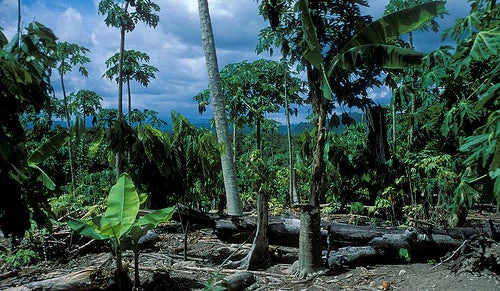
Last week in Paris, the Forest Carbon Partnership Facility’s partners and stakeholders agreed on groundbreaking rules for investments in tropical forest protection in developing nations – a framework that will also help reduce greenhouse gas emissions in our rapidly warming world.
Capping an intense five days of negotiations, this major milestone unblocks $390 million in funding held in escrow in the facility’s Carbon Fund. The agreement (formally known as a Methodological Framework) spells out how tropical countries should design and implement large-scale protection programs in the lowland and mountain forests of the tropics.
In return, the countries get results-based payments from donor countries that support climate policy and social development goals.
It’s the first time an international organization has put on paper the operational rules for purchasing so-called REDD+ credits to reduce greenhouse gas emissions. (REDD is short for Reducing Emissions from Deforestation and Forest Degradation.)
Reaching consensus on the operational roadmap for REDD+ required input from a diverse set of sometimes-contradictory viewpoints.
Seated at the table to negotiate through the many issues in Paris were donor countries, private corporations, officials from tropical countries willing to experiment with REDD+, civil society organizations and representatives from indigenous groups who were championing the rights of traditional dwellers in tropical forests.
The two-year preparation process forged compromise and consensus on challenging issues such as how social and environmental safeguards would be implemented, how the rules would parallel emerging guidance from the United Nations on REDD+, how progress on stalling deforestation would be measured, and how title to emission reductions would be determined.
We succeeded thanks to a frank exchange of perspectives: sharing of early lessons of REDD+ implementation on the ground in countries such as the Democratic Republic of Congo, Indonesia and Vietnam; and analysis of new remote-sensing data. This contributed to a stronger and wiser framework of rules.
So significant is this announcement, in fact, that donors immediately signaled they want to make new contributions. Just today, Norway pledged $100 million and we expect more such announcements in the near future.
The Forest Carbon Partnership Facility, a global partnership seeking to reduce greenhouse gas emissions from deforestation and degradation in tropical forests, now has a roadmap for purchasing carbon credits from developing countries that have a REDD+ readiness package – a strategy and program to reduce deforestation on the ground – and a formal Emission Reductions Program Document in place.
The FCPF Readiness Fund has been supporting countries in planning their effort to reduce deforestation since 2009, and today 12 countries have readiness plans under implementation.
Costa Rica is the first country to have its early draft Program for the Carbon Fund, and the first to sign a Letter of Intent last September with the World Bank to sell carbon credits generated by Costa Rica starting in the next few years.
The Bank serves as the trustee and delivery partner for FCPF funding, and houses the secretariat for the FCPF. About 10 countries are now crafting proposals for Carbon Fund funding of emission-reduction programs.
As with the activities of the facility in general, the Methodological Framework is a pilot that allows the testing of how REDD+ works in a wide array of country contexts. If it works and is effective, we hope that other, larger climate initiatives can hone its early lessons on a much larger scale to greatly reduce global deforestation.


Join the Conversation